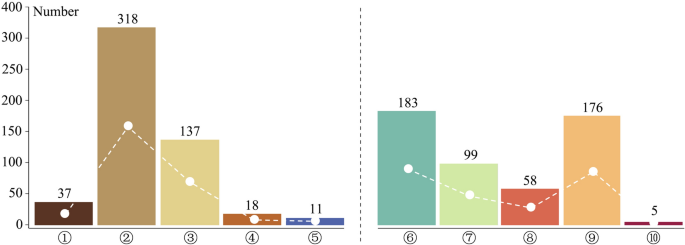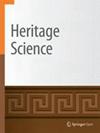An investigating on the ritual elements influencing factor of decorative art: based on Guangdong's ancestral hall architectural murals text mining
IF 2.6
1区 艺术学
Q2 CHEMISTRY, ANALYTICAL
引用次数: 0
Abstract
Abstract The gradual loss of certain good cultural genes in the traditional ritual system is, to some extent, driven by the value orientation of the art of ancestral hall decoration. This article uses wall paintings as a medium to uncover significant variables affecting the decorating of ancestral hall murals and to analyze the culturally formative relationships underlying their art from a ceremonial perspective. It depends on textual excavation. The analysis demonstrates that: (1) the 521 murals generally transmit positive content; (2) the shift in the painted figures’ seating and grooming from formal to casual represents the fading of ceremonial concepts; (3) The control of economic costs may be a possible explanation for the large number of figures in crouching, skirting, and side-lying postures in wall paintings; (4) The fact that the colors employed in the garments of the figures from the Ming and Qing dynasties don’t follow the folk color scheme demonstrates that the creative production at that time was not constrained by a lot of ritualistic considerations. The study concludes that the absence of an educational component in the arts is a contributing factor to the diluted nature of traditional rituals in modern China.

装饰艺术的仪式元素影响因素探析——基于广东宗祠建筑壁画文本挖掘
传统礼制中某些优良文化基因的逐渐流失,在一定程度上是由宗祠装饰艺术的价值取向所驱动的。本文以壁画为媒介,揭示影响祠堂壁画装饰的重要变量,并从仪式的角度分析其艺术背后的文化形成关系。这取决于文本挖掘。分析表明:(1)521幅壁画普遍传递积极的内容;(2)绘画人物的坐姿和仪容从正式到休闲的转变代表了仪式观念的消退;(3)壁画中出现大量蹲伏、踢腿、侧躺等姿势的可能原因是对经济成本的控制;(4)明清人物服装的配色并不遵循民间配色,说明当时的创作生产并没有受到很多仪式性考虑的束缚。该研究的结论是,艺术中缺乏教育成分是导致现代中国传统仪式被稀释的一个因素。
本文章由计算机程序翻译,如有差异,请以英文原文为准。
求助全文
约1分钟内获得全文
求助全文
来源期刊

Heritage Science
Arts and Humanities-Conservation
CiteScore
4.00
自引率
20.00%
发文量
183
审稿时长
19 weeks
期刊介绍:
Heritage Science is an open access journal publishing original peer-reviewed research covering:
Understanding of the manufacturing processes, provenances, and environmental contexts of material types, objects, and buildings, of cultural significance including their historical significance.
Understanding and prediction of physico-chemical and biological degradation processes of cultural artefacts, including climate change, and predictive heritage studies.
Development and application of analytical and imaging methods or equipments for non-invasive, non-destructive or portable analysis of artwork and objects of cultural significance to identify component materials, degradation products and deterioration markers.
Development and application of invasive and destructive methods for understanding the provenance of objects of cultural significance.
Development and critical assessment of treatment materials and methods for artwork and objects of cultural significance.
Development and application of statistical methods and algorithms for data analysis to further understanding of culturally significant objects.
Publication of reference and corpus datasets as supplementary information to the statistical and analytical studies above.
Description of novel technologies that can assist in the understanding of cultural heritage.
 求助内容:
求助内容: 应助结果提醒方式:
应助结果提醒方式:


